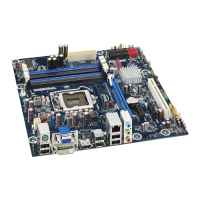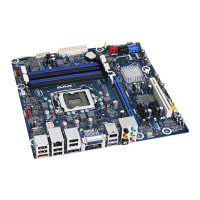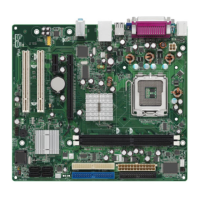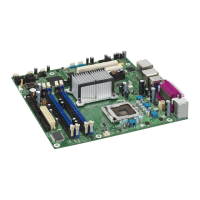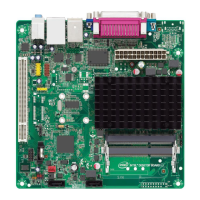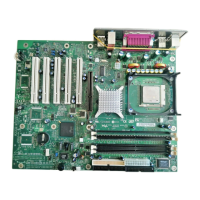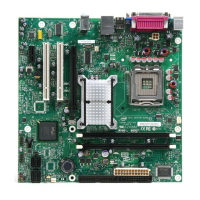46 Intel
®
440Bx Scalable Performance Board Development Kit Manual
BIOS Quick Reference
5.4 Configuring Boot Actions
Embedded BIOS supports up to six different user-defined steps in the boot sequence. When the
entire system has been initialized, POST executes these steps in order until an operating system
successfully loads. In addition, other pre-boot features can be run before, after, or between
operating system load attempts. The following actions can be used:
Drive A: - K: Boot operating system from specified drive. If “Loader” is set to
“BootRecord” or “Unused”, then the standard boot record will be
invoked, causing DOS, Windows95/98, Windows NT, or other industry-
standard operating systems to load. If “Boot Method” is set to “Windows
CE”, then the boot drive’s boot record will not be used, and instead the
BIOS will attempt to load and execute the Windows CE Kernel file,
NK.BIN, from the root directory of each boot device.
Debugger Launch the Integrated BIOS Debugger. To return to the boot process
from the debugger environment, type “G” at the debugger prompt and
press ENTER.
MFGMODE Initiate Manufacturing Mode, allowing the system to be configured
remotely via an RS232 connect to a host computer.
WindowsCE Execute a ROM-resident copy of Windows CE, if available. This feature
is not applicable unless properly configured by the OEM in the BIOS
adaptation.
DOS in ROM Execute a ROM-resident copy of DOS, if available. This feature is not
applicable unless an XIP copy of DOS, such as Embedded DOS-ROM,
has been stored in the BIOS boot ROM. Copies of Embedded DOS-
ROM may be obtained from General Software.
None No action; POST proceeds to the next activity in the sequence.
5.5 Custom Configuration Setup Screen
The system’s hardware-specific features are configured with the Custom Setup Screen (Figure 6).
All features are straightforward except for the Redirect Debugger I/O option, which is an extra
embedded feature that allows the user to select whether the Integrated BIOS Debugger should use
standard keyboard and video or RS232 console redirection for interaction with the user. If no video
is available, the debugger is always redirected.

